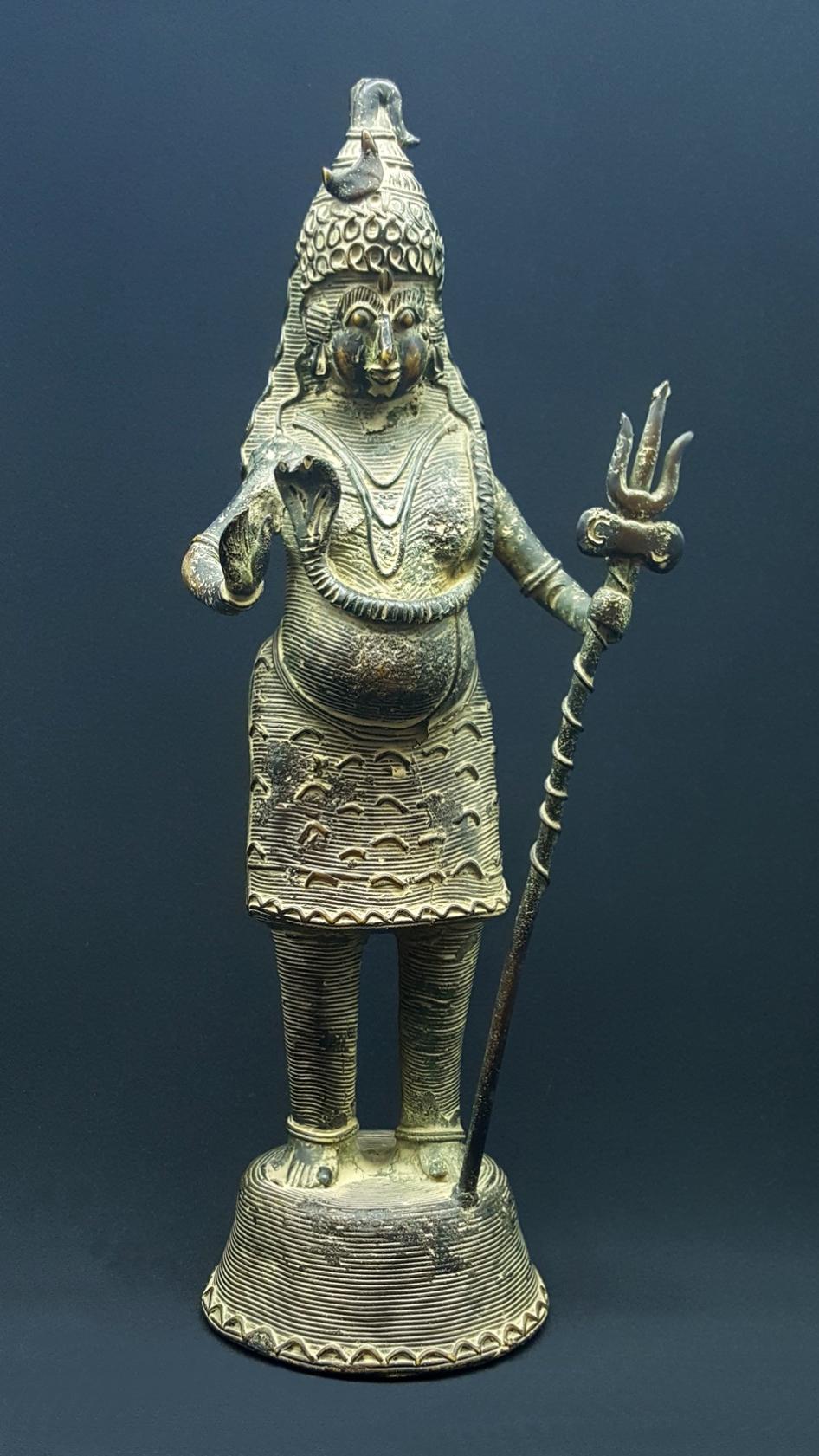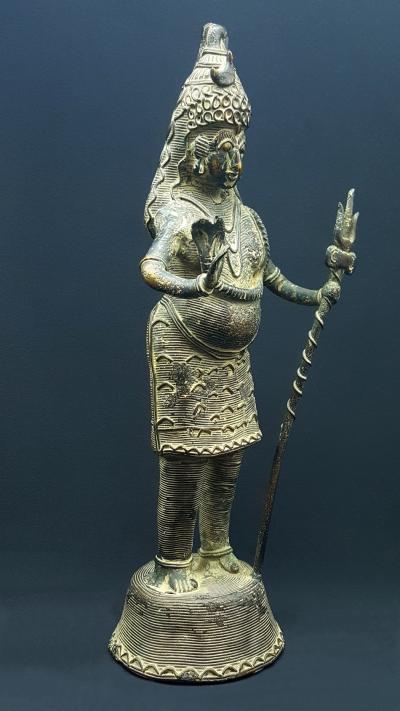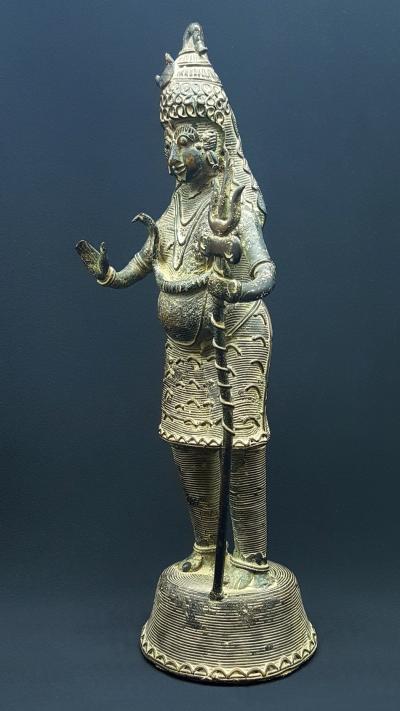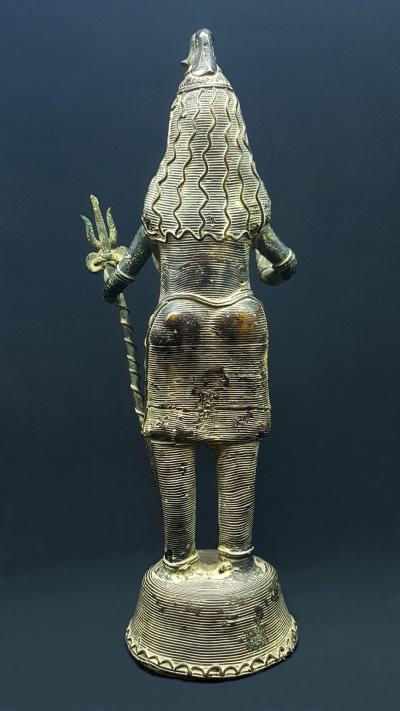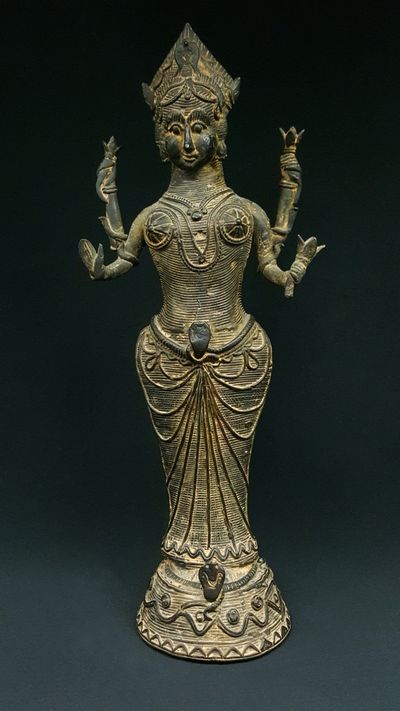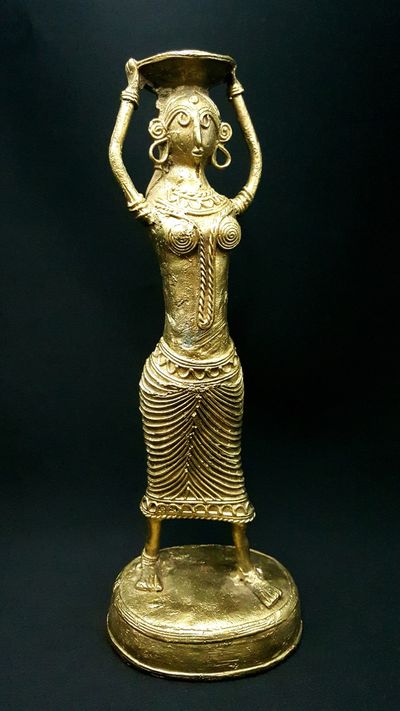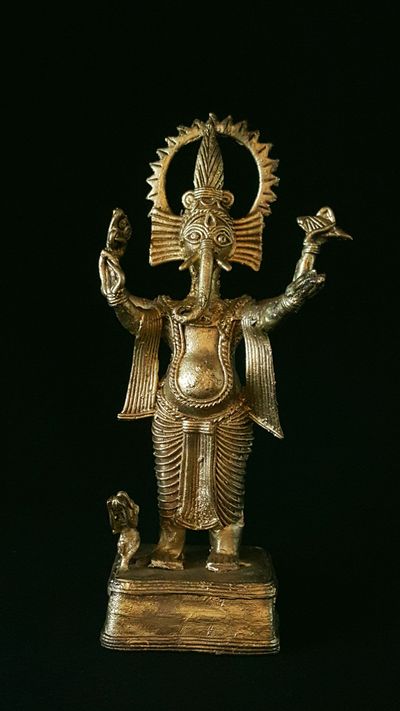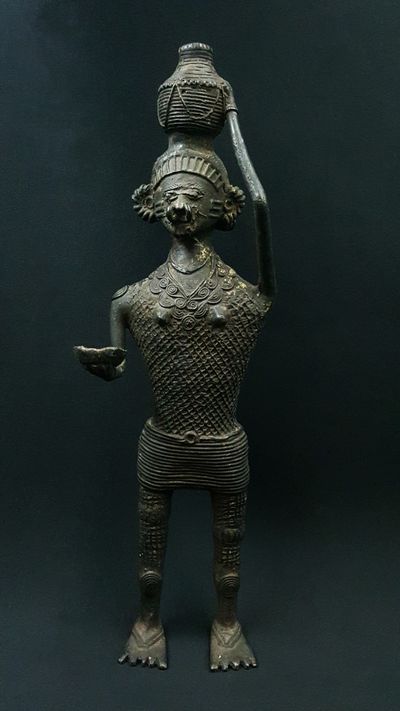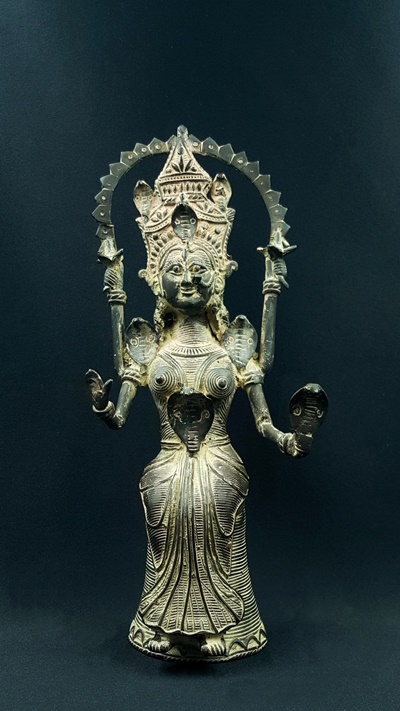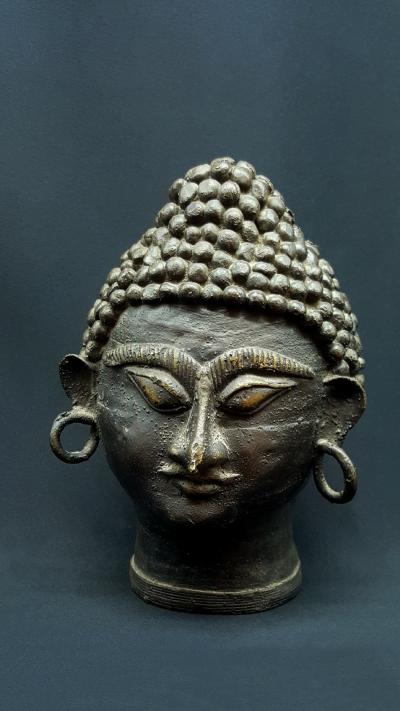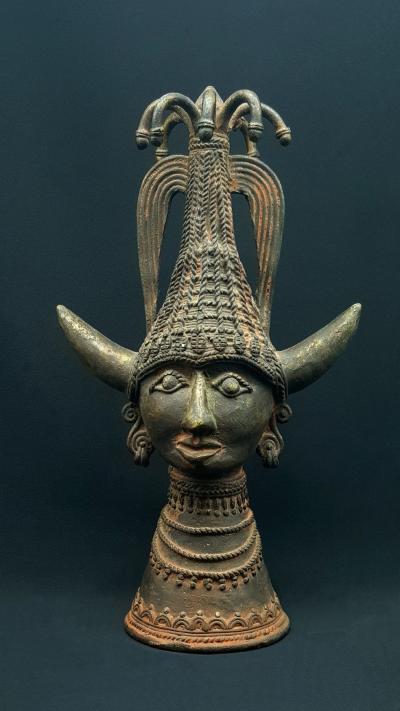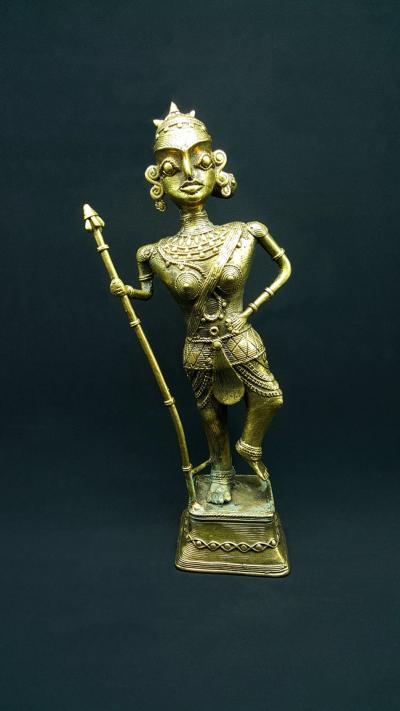Shiva Chandra Sekhara
Celui qui porte la lune dans ses cheveux
€295.00
Cette statue tribale de Shiva respecte les canons symbolique et esthétique de l’art sacré hindou tout en lui apportant une note caractéristique de l’art Dokra : beauté tout en simplicité En savoir plus...
Hauteur : 29.5 cm
Poids : 1.290 Kg
Art sacré
Cire perdue
Origine : Odisha - Inde
Livraison gratuite UE, Norvège et Suisse
Description
Shiva est un des trois dieux principaux de l’hindouisme avec Brahma et Vishnou qui forme la Trimurti : Brahma représente le principe créateur, Vishnou, le préservateur et Shiva le destructeur qui permet le renouvellement. Ces trois forces sont indissociables, complémentaires et opposées.
Shiva symbolise la destruction qui permet la régénération, qui permet la libération (moksha) : libération de l'illusion des formes, de l'ego, de l'attachement au passé - à ses conditionnements qui nous empêche de retrouver notre nature primordiale, la pleine conscience - l'atman.
Histoire
Shiva possède plus de 1000 noms ainsi que de nombreuses formes : Shambhu le bienfaisant, Rudra, le hurleur... Ici Shiva est, dans cette statue, représentée sous une forme bénéfique, Chandra Sekara : Chandra signifie la lune et Shekara fait référence la couronne, soit Celui qui porte la lune dans sa couronne ou ses cheveux.
La légende raconte que Daksha avait marié ses 27 filles à Chandra. Cependant il apprit que Chandra délaissait 25 d’entre elles pour ne s’occuper que de Rohîni et de Kartikaî, ce qui causait une profonde disharmonie. Daksha, furieux, décida de punir la Lune en lui faisant perdre sa luminosité. Chandra se mit alors en pénitence, mais Daksha restait intraitable alors il fit appel à Shiva : bienveillant et protecteur, il plaça Chandra dans sa chevelure et lui permit d’éclairer par période de 14 jours ascendante puis descendante.
L'art Dokra : un savoir millénaire dans la fabrication de statues
Cet art traditionnel et artisanal n'a pas changé depuis des millénaires (+ de 4000 ans) et la technique utilisée est toujours celle de la cire perdue : un modèle grossier en argile est réalisé puis recouvert de cire par l'artiste qui va lui donner sa forme définitive avec ses détails. L'ensemble est à nouveau recouvert d'un mélange argileux puis chauffé dans un foyer ouvert où un alliage cuivreux sera coulé.
Les objets produits par les artistes Dokra peuvent être de nature usuels : coupelle, bougeoir... des instruments de musiques (cuivres), ou bien artistiques tels que des bijoux, des animaux : chevaux, éléphants, tortues..., des statues d'hommes et femmes représentant des scènes de vies quotidiennes et des divinités hindous adoptées par les tribus : Ganesh, Lakshmi,...
Cette statue symbolise : la bienveillance, celui qui donne la félicité
Posture Debout, dans la posture dite Samabhanga, sans flexion, immuable. Il est serein, apaisé. Son corps puissant représente la force. Ses jambes évoque deux piliers inaltérables.
Son ventre est gros tel qu’il souvent représenté chez Ganesh : c'est le centre des énergies vitales. Il symbolise l'ancrage, la présence ici et maintenant, la stabilité.
Tête Un chignon haut surmonté du cobra. Le croissant de lune, sur son front (dans ses cheveux), symbolise la coupe : elle contient Soma, la liqueur d'éternité mais incarne aussi le cycle immuable de la mort et de la naissance. Le troisième œil au milieu du front représente le feu de la connaissance
Gestes Le bras gauche, coude plié tient le trident, l'attribut le plus connu de Shiva. La main droite fait le geste de protection (shrishti).
Habillements Comme toujours, la sobriété vestimentaire caractérise Shiva. Le cordon sacré des brahmanes, marqué par un fil très discret, orne son ventre.
Bijoux Pas de bijoux dans cette statue excepté quelques discrets bracelets. Les boucles d’oreilles à gauche et à droite incarne l’ambivalence de Shiva : bénéfique et destructeur, masculin et féminin...
Sa parure est avant tout le cobra !
Socle Les dieux ne touchent jamais le sol : la terre est le domaine des êtres de chair et de sang.
Attributs
Le trident : Les trois dents représentent la Trimurti : création - préservation - destruction (mais aussi les 3 trois Gunas....). C'est aussi une arme puissante symbole de la foudre qui combat les démons. Ici, son long manche représente l'axe de l'univers.
Le serpent le cobra, symbole de régénération et de l'énergie (Shakti).
Cette statue tribale de Shiva respecte les canons symbolique et esthétique de l’art sacré hindou tout en lui apportant une note caractéristique de l’art Dokra : technique de la cire perdue utilisant le fil de cire et expression particulière du visage.
